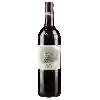
Winery La GuyennoiseMargelle Bordeaux
In the mouth this red wine is a powerful with a nice balance between acidity and tannins.
This wine generally goes well with poultry, beef or veal.
Taste structure of the Margelle Bordeaux from the Winery La Guyennoise
Light | Bold | |
Smooth | Tannic | |
Dry | Sweet | |
Soft | Acidic |
In the mouth the Margelle Bordeaux of Winery La Guyennoise in the region of Bordeaux is a powerful with a nice balance between acidity and tannins.
Food and wine pairings with Margelle Bordeaux
Pairings that work perfectly with Margelle Bordeaux
Original food and wine pairings with Margelle Bordeaux
The Margelle Bordeaux of Winery La Guyennoise matches generally quite well with dishes of beef, veal or game (deer, venison) such as recipes of roast beef in a crust, veal escalope with marsala or wild boar stew marinated in red wine.
Details and technical informations about Winery La Guyennoise's Margelle Bordeaux.
Discover the grape variety: Johanniter
An interspecific cross between Riesling and FR 589-54 (Seyve-Villard 12481 x (pinot gris or rülander x chasselas or gutedel)) obtained in Germany in 1968 by Johannes Zimmermann. It has the particularity of having only one gene for resistance to mildew and powdery mildew. This variety can be found in Germany, Belgium, Switzerland, the Netherlands, etc. In France, it is practically unknown. Note that the "Johanniter" grape variety is a protected trademark.
Last vintages of this wine
The best vintages of Margelle Bordeaux from Winery La Guyennoise are 2015
Informations about the Winery La Guyennoise
The Winery La Guyennoise is one of of the world's great estates. It offers 675 wines for sale in the of Bordeaux to come and discover on site or to buy online.
The wine region of Bordeaux
Bordeaux, in southwestern France, is one of the most famous, prestigious and prolific wine regions in the world. The majority of Bordeaux wines (nearly 90% of the production Volume) are the Dry, medium and Full-bodied red Bordeaux blends for which it is famous. The finest (and most expensive) are the wines of the great châteaux of Haut-Médoc and the right bank appellations of Saint-Émilion and Pomerol. The former focuses (at the highest level) on Cabernet Sauvignon, the latter on Merlot.
The word of the wine: Friendly
Said of a wine whose aspects are pleasant and not too marked.














